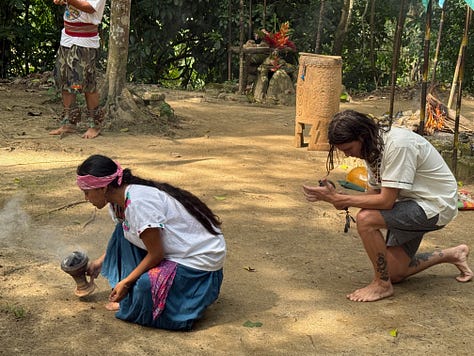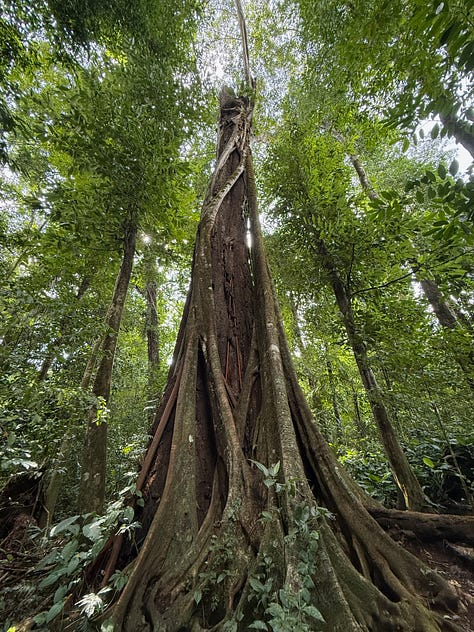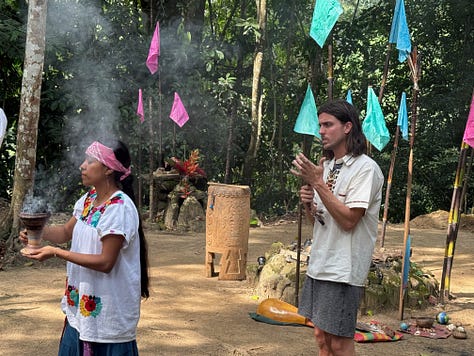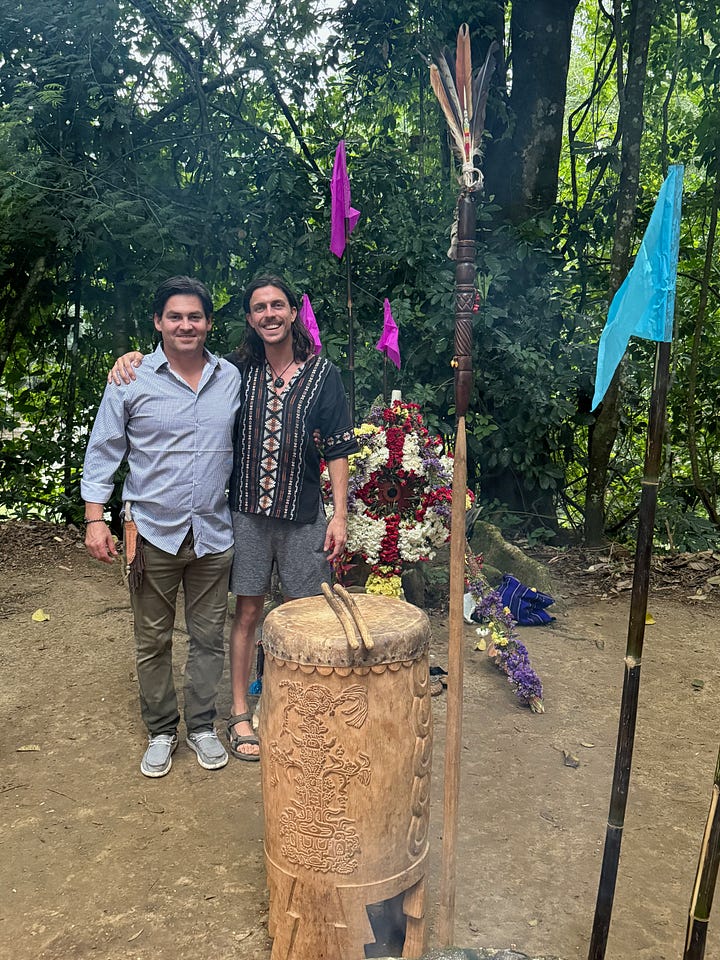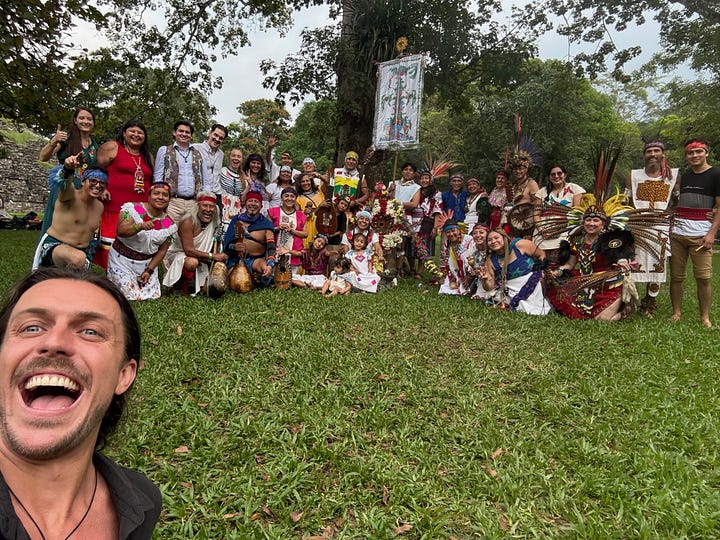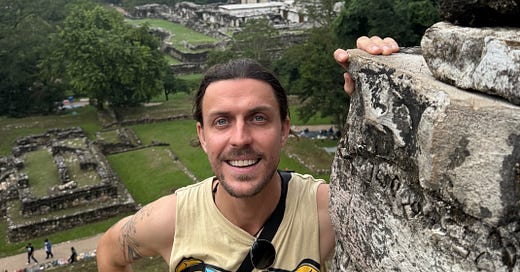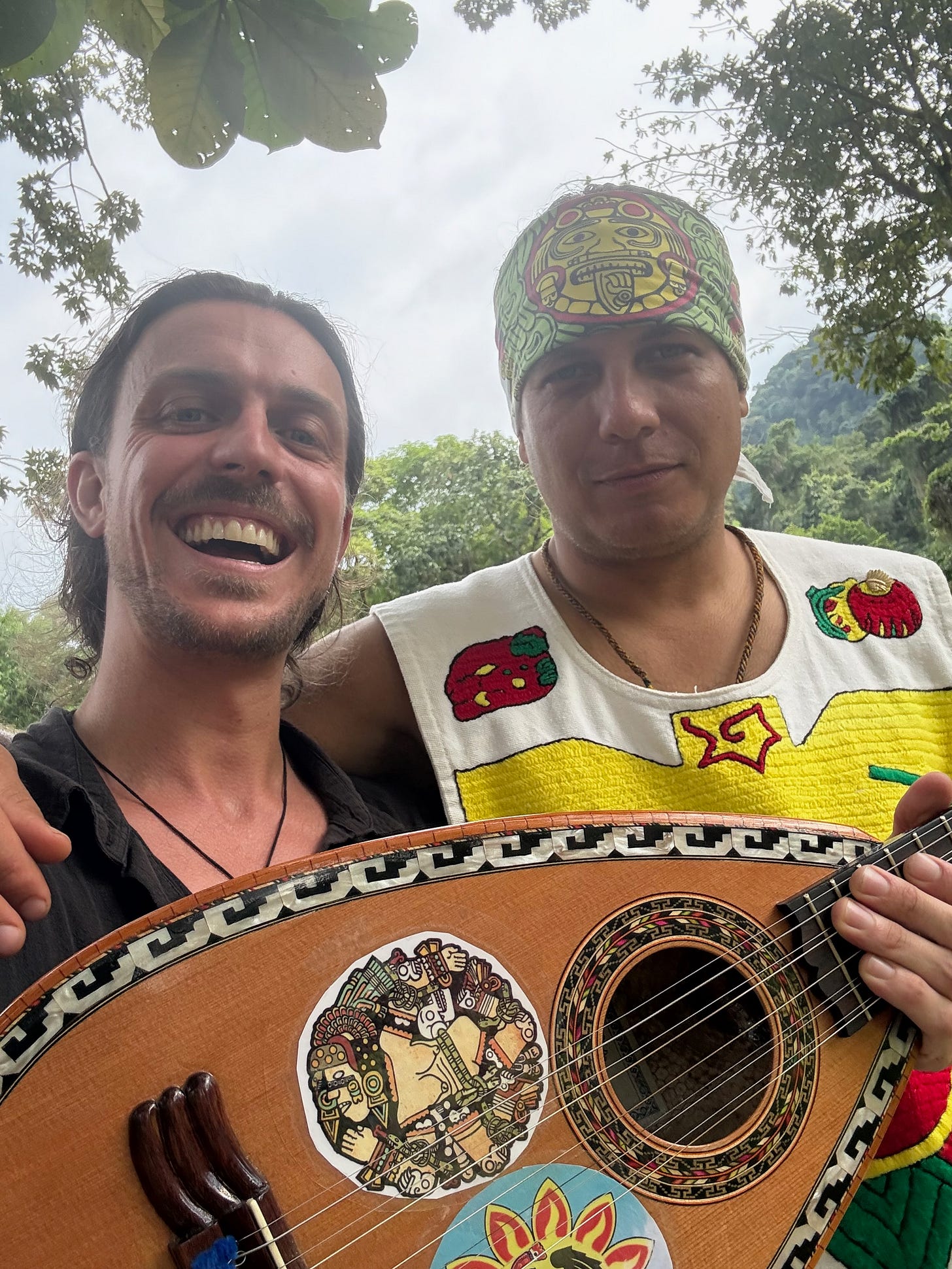In December 2024, I began a journey back to Mexico—a place I’ve always turned to when I need to reconnect with myself. Something in its land, its rhythm, and its memory holds a mirror up to me. Sometimes gently, other times not so much.
I started in the Yucatán, visiting my Abuela—who, I’m sure, I’ll write more about another time. From there, I travelled south into Chiapas for the first time. I was on my way to visit Palenque.
If you’ve never been, Palenque is one of the most significant Mayan archaeological sites in the world. Only two percent of it has been excavated, and even that two percent is staggering to witness.
I planned to be there for the solstice—the sacred return of the sun. That timing felt intentional, though I didn’t know exactly why.
On the day of the solstice, I walked into the ruins, unsure what I was looking for, but trusting the pull. My heart drew me south, so I followed. That’s when I stumbled into a large ceremonial gathering—people from all across the Americas, dressed in traditional regalia, preparing for the solstice celebration.
I said hello. They welcomed me. And just like that, I was part of the ceremony.
That’s where I met another Benjamin—a young man carrying an armadillo-shell instrument called a concha. “¡Tocayo!” he said, smiling. That’s what you call someone who shares your name in Spanish. We talked for a while, and then I met his mother, who told me I could be “Benjamin Dos.” I thought that was beautiful. I’m proud to be.
Later, someone leaned over and told me she held high standing in the Mayan community. I had no idea. She told me I could call her Mama. I would see her again in a few months.
As the ceremony unfolded beneath a great tree, someone pointed out a document at the centre of the altar—600 pages of stories, teachings, and prophecies gathered from across Indigenous nations. A living archive. A reweaving of memory.
This wasn’t just a solstice ritual. It was global First Nations diplomacy. Right there, among the ruins. Right in front of me. Representatives from groups across North America were coming together in this ceremony to prepare to share these sacred teachings. What an honor.
Afterward, Benjamin invited me to visit his family’s land for another ceremony the following day. Those who know me well know that if you invite me somewhere, you’d better be prepared for me to show up.
And I did. The next day, I took a taxi through tinier and tinier towns, down dirt roads, and waded across the river to arrive for ceremony.
In this ceremony, I met Chief Midegah of the Anishinaabe people. He was from Missouri. We went for a walk together so I could learn from him.
At this point I wanna mention that three is prior. I was in Mexico reading a book by an indigenous Australian men named Tyson Yunkaporta. The book is called Sand Talk and the subtitle is ‘How Indigenous Thinking Can Save The World’. When I read it, noticed the similarities between indigenous Australian and Mayan cultures. They were striking. The wisdom obvious. I started to re-evaluate my own system and patterns, shifting how I moved through the world. Sand Talk, in its essence, refers to the act of drawing stories and knowledge into the sand—teaching through symbol, through earth, through togetherness.
So here I was, three years later, with a First Nations elder as he drew trade routes into the dirt with a stick. Alaska to the Mississippi. Gulf of Mexico to the Andes. Lines that carried goods, yes—but also relationships, ceremonies, songs. These people knew each other thousands of years longer than is commonly acknowledged.
Thousands of years of connection. Thousands of years of memory.
Then he started to get into the really fun stuff. That part, I’ll save for another post.
For now, I’ll just say that this moment would alter the course of how the next few months panned out.
—Benjamin
📬 If this stirred something in you, reply and share your own solstice memory or sacred encounter.
🌿 faralore.com/seekers-keepers
